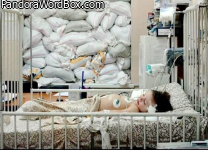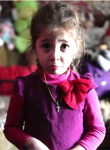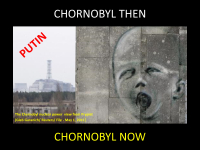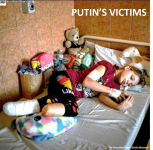Our websites offer information mostly for educational purposes with no intent to alter health care protocols nor to serve as a sole source of medical information.
Always seek the advice of your local health care provider.
|
× UKRAINIAN CHILDREN WITH DISABILITIES HAVE SPECIAL NEEDS |

"Pygmies Nilotic Scene" (see details A | B | C | D | E | F | G | H) (see related A | B | C | D | E | F | G | H | I), 200 AD Metropolitan Museum of Art, New York City, New York, USA
This mosaic illustrates multiple individuals with short stature and proportions strongly suggestive of achondroplasia (large head and rhyzomelia).
'Rhyzo' means 'root' and 'melia' means 'limb'. In medical parlance rhyzomelia implicitly denotes "shortness" as in rhyzomelic dwarfism. These individuals can not be referred to as midgets because midgets are proportionally "small people".
The fact that this artist represented multiple individuals with "rhyzomelic dwarfism" suggests an awareness that the disorder is relatively frequent and characteristic - however clinicians did not describe this syndrome until quite recently. The fact that fathers or mothers with this syndrome engendered similar children did not escape the notice of artists either - furthermore they depicted "achondroplasia" in individuals of normal or superior intelligence who served as policy advisors to a variety of kings. Peter the "Great" of Moscovy (he was among the first to rename and popularize the name "Great" Russia for what was then "Moscovy"). Some historians assert that he also forbade couples with achondroplasia to reproduce because women with achondroplasia died during delivery. Today, such women deliver by Cesarian section.
Note multiple related images with emphasis on achondroplasia. There are many others (search key words "dwarf, pygmy, midget..." and other related terms for "short-stature people"). For extensive elaborations on nomenclature on this topic search "word ideas" with the same key words.
'Rhyzo' means 'root' and 'melia' means 'limb'. In medical parlance rhyzomelia implicitly denotes "shortness" as in rhyzomelic dwarfism. These individuals can not be referred to as midgets because midgets are proportionally "small people".
The fact that this artist represented multiple individuals with "rhyzomelic dwarfism" suggests an awareness that the disorder is relatively frequent and characteristic - however clinicians did not describe this syndrome until quite recently. The fact that fathers or mothers with this syndrome engendered similar children did not escape the notice of artists either - furthermore they depicted "achondroplasia" in individuals of normal or superior intelligence who served as policy advisors to a variety of kings. Peter the "Great" of Moscovy (he was among the first to rename and popularize the name "Great" Russia for what was then "Moscovy"). Some historians assert that he also forbade couples with achondroplasia to reproduce because women with achondroplasia died during delivery. Today, such women deliver by Cesarian section.
Note multiple related images with emphasis on achondroplasia. There are many others (search key words "dwarf, pygmy, midget..." and other related terms for "short-stature people"). For extensive elaborations on nomenclature on this topic search "word ideas" with the same key words.
20170622 ww
|









